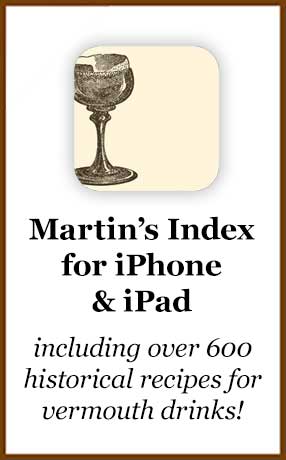
Quinquina & Americano
by Brand
Unavoidably, this guide is not exhaustive. Some quinquinas are regional products that don’t get exported to the U.S., and admittedly, the listings here are biased toward the U.S. marketplace. However, the marketplace is fluid, and we will add more listings as adequate information becomes available.
Bonal Gentiane Quina
(bone-ALL)
From St. Laurent du Pont, beginning 1865. A full-bodied quinquina that balances quinine and gentian botanicals.
Web site: //www.alpenz.com/
Byrrh
(BEER)
Created in Thuir, France, beginning 1866. Rarely imported to the USA. Byrrh is a rare example of an aperitif based on red mistelle.
Web site: //www.byrrh.com/
Cocchi Americano
(KOE-kee)
Created in Asti, Piedmont, Italy, beginning 1891. Based on Moscato di Asti.
- Cocchi Americano
- Cocchi Americano Rosa [introduced 2013]
Web site: alpenz.com or //www.cocchi.com

Contratto
(con-TRAH-toe)
Prominent sparkling wine producer in Piemonte. New ownership has brought their 19th Century vermouth and americano products back into production, with emergent distribution in the United States.
- Contratto Americano Rosso
Web site: www.contratto.it
Dubonnet
(DOO-bo-nay)
Originally marketed as Quinquina Dubonnet and created in Paris, France in 1846. Dubonnet is one of the mildest quinquinas, botanically speaking. Since World War Two, all Dubonnet in the US market has been produced under license in Kentucky by the Heaven Hill Distillery, and there are questions about the integrity of the product. The European product is generally regarded as exemplary.
Note that the classic Dubonnet wine is the “rouge” (red) expression. The “blanc” (straw-colored) product is a peculiar American market spinoff.
- Rouge
- Rouge (US market)
- Blanc (US market)
Web site: //www.doyoudubonnet.com/




Lillet
(lee-LAY)
Produced in Podensac, Bordeaux, France, from 1887.
Lillet’s primary product is generally called Lillet Blanc, but is usually labeled just “Lillet”. Various formulas of Lillet have existed at different times under different names, including “Amer-Kina”, “Kina Lillet”, “Lillet Français” and “Lillet Dry Export”, all were relatively sweeter and bitterer than today’s product, which dates to around 1986. Today’s Lillet Blanc is amongst the mildest quinquinas, botanically speaking. It contains quinine, but only a hint, and no other botanicals.
A deep red “Rouge” expression, a “vintage” expression and a rosé expression are also available in some markets.
- Blanc
- Rouge [introduced c. 1962]
- Cuvée Réserve Jean de Lillet
- Rose [introduced c. 2010]
Web site: //www.lillet.com/
MAiDENii
Novel Americano-like gentian aperitif wine from Australia featuring regional botanicals.
- Aperitif* NON-TRADITIONAL: MODERN
*not imported to the USA
Web site: //maidenii.com.au
St. Raphaël
(SAWN raw-FEL)
Created in Lyon, France, in 1830. Originally marketed as Quinquina St. Raphaël. Product line refreshed under new management in 2008, and reintroduced to the USA market in 2016.
- Rouge
- Doré
Both expressions of St. Raphaël are based on mistelle, one white, the other red. Primary botantical components are quinine, orange peel, cacao and vanilla.
Web site: //www.straphael.fr/












